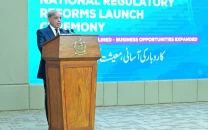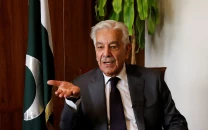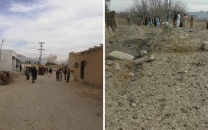Pakistanis spending less on education than before
Fewer children being enrolled at government–run schools, Balochistan and KP continue to fare badly.

Pakistanis are spending less on education now than they did three years ago while primary enrollment at government-run schools has decreased by two percentage points over the same period, according to recently released surveys.
When campaigning for the 2008 general elections, political parties pledged to increase spending on and improve the standard and quality of education while the 18th Amendment to the constitution made education a fundamental right.
The extent to which those promises have materialized, however, is evident from the Pakistan Social and Living Standards Measurement (PSLM) survey for 2010 – 2011, conducted by the Federal Bureau of Statistics (FBS).
For one, the adult literacy rate has only increased by 1%, to 55%. Satisfaction with educational services was at 60%, down from 62% in 2008-2009.
According to prominent educationist Prof Anita Ghulam Ali, the dissatisfaction is because of confusion over government policies. “Look at the state of primary schools and colleges, absenteeism of teachers and the lack of discipline. The government keeps chopping and changing its policy, and what is the outcome? Ultimately parents will want to opt for an O’ or A’ levels system and try to send their children to private schools that are unaffordable.”
Data compiled by the FBS for household income and consumption expenditure proves Ali’s assessment right. Spending on education in urban areas has decreased to 4.82% of average monthly expenditure, compared to 5.26% in 2007-2008. In rural areas, the percentage decreased to 2.51% from 2.94%.
Education for women remains dismal. Only 47% of the women surveyed in four provinces had ever been to school, as compared to 71% of the men. Balochistan fares the worst on this indicator, with only 39% of the urban female population and 13% of the rural female population having ever attended school.
Ali, who heads the Sindh Education Foundation, said that while there was always a wide difference in urban and rural educational facilities, the inequality is growing.
“The kind of people who are appointed as administrators, and I’m sorry to say, even the teachers in rural areas … there’s no control. No one seems to evaluate what the teachers are doing or what the students have absorbed.”
Astonishingly, in Khyber Pakhtunkhwa’s districts of Shangla, Kohistan, Battagram and Buner and Harnai, Awaran, Washuk, Musa Khel and Sherani in Balochistan, 0% of the urban male and female population surveyed had attended school.
Published in The Express Tribune, September 30th, 2011.


















COMMENTS
Comments are moderated and generally will be posted if they are on-topic and not abusive.
For more information, please see our Comments FAQ